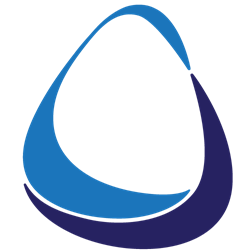

#Sabai technology web monitor series#
A mixed method approach is used to collect data through a series of semi-structured interviews and a survey. A variety of business and community stakeholders are part of the broader case study contributing a rich understanding of the dynamics of the region. Also considered are the implications of STE attitudes and behaviour in relation to the New Zealand Tourism Strategy and the New Zealand Digital Strategy goals in shaping regional development. Using the case of Western Southland, this study explores the profile and characteristics of STE their perceptions of the value of networking and collaboration, and their attitudes towards and use of ICT. Promoting the development of a cohesive tourism industry in the Western Southland region will benefit individual operators, their communities and the region as a whole.

Information and communications technologies (ICT) enhance access to information, improve the efficiency of business activities and promote networking between businesses, community and travellers at the local, regional and international level.Western Southland is a predominantly rural region in the far south of New Zealand. Characterised by flexible organisational structures and small size, STE are well positioned to respond to a growing demand for unique personalised visitor experiences. Small tourism enterprises (STE) lie at the heart of the industry and form a major part of the tourism sector. Tourism is increasingly being used as a tool to stimulate regional development in rural areas. These interventions should be simple and easily accessible to everyone.
#Sabai technology web monitor software#
Thus, these standard software systems should be the focus of digital literacy training interventions. Although many new technologies are being developed, certain standard software systems, such as the Microsoft Office package, will always be used. Most of the entrepreneurs now have access to an information technology consultant or expert who can help them to become more digitally literate. These main barriers include a lack of expertise, in-house knowledge or a one-stop shop to assist with ICT queries and problems. This article proposes that most entrepreneurs have addressed one of the main barriers. Thus, digital literacy cannot be used as a broad term and needs to be focused for each sector. It emerged that technology adoption and digital literacy studies should be industry-specific and should not be based on a generic approach. The identified barriers no longer seem to exist for South African entrepreneurs. An interpretivist paradigm using a qualitative approach was employed and 193 entrepreneurs were interviewed over three years to see if there was any change in their adoption of technology, which should be the case if one recognises the pace at which technology is changing.

Data were gathered over three years (2012, 20) to determine whether there has been any change in the uptake of technology over time, whether technology is indeed the answer to many entrepreneurs’ problems and whether some of the barriers could be overcome. Many barriers prevent these initiatives from being successful, for example difficulty in retaining the current workforce, a lack of skills and human capital development, a lack of resources, security concerns, mistrust regarding ICT and ICT service providers and a lack of trust. However, many of these did not have the desired outcomes. Many interventions have tried to assist a country’s residents to adopt ICT and enhance their digital literacy levels. This, in turn, leads to an increased need for digital literacy interventions for these entrepreneurs. There is an increased need for small businesses to employ information and communication technology (ICT) to enhance their businesses as part of their countries’ socio-economic development. Technology is believed to be one of the biggest tools that entrepreneurs can use to assist them in growing sustainable businesses. It has long been the focus of many countries around the world to see their entrepreneurs grow and to introduce interventions to assist them, as they realise the impact these entrepreneurs have on their economies.


 0 kommentar(er)
0 kommentar(er)
